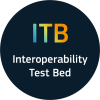
The Interoperability Test Bed has published a new guide with step-by-step instructions on how to make an on-premise production validator installation.

One of the Test Bed’s most popular services is the simple definition of validators for XML, RDF, JSON or CSV data. To create a validator, users need to only provide their specification’s validation artefacts alongside a simple configuration file, typically shared with the Test Bed team through a private or public Git repository. Based on this, the Test Bed team creates, hosts and publishes a validator on its cloud infrastructure, which is then kept automatically updated whenever configuration changes are made. All validators support a web user interface, one or more machine-to-machine APIs and command-line tools, enabling various validation use cases as well as use in conformance test cases.
Having validators hosted and managed through the Test Bed is however not the only option. Users may choose to run validators on their own infrastructure to enable further use cases for which managed instances may not be ideal. Examples include operating sets of validators as support components of production services, or integrating validators with internal systems for automated quality control of data flows.
Given the increasing demand for on-premise validators, the Test Bed has now published a new detailed guide with instructions on how such validators can be installed. The new guide walks you through the different options to consider, offering several installation approaches including a “bare-metal” setup, and use of containers with Docker and Kubernetes. In each case basic steps are complemented with optional advanced topics such as reverse proxy configuration, and scaling validator instances to increase throughput and availability.

The new validator installation guide, part of the Test Bed’s online guides, complements the validation guides for XML, RDF, JSON and CSV data. If you have not created a validator but you would interested in doing so, be sure to first check the relevant guide:
- The XML validation guide for XML data using XML Schema and Schematron.
- The RDF validation guide for RDF data using SHACL shapes.
- The JSON validation guide for JSON data using JSON Schema.
- The CSV validation guide for CSV data using Table Schema.
The latest guide makes it simpler to use validators as part of your internal processes or production operations. Details on the Test Bed itself can be found in its Joinup space with its value proposition being a good starting point for newcomers. Finally, to remain updated of all the latest Test Bed news:
Referenced solution


